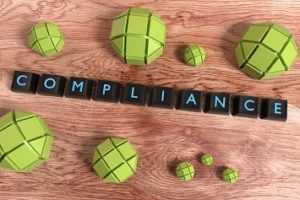Earlier this week, we looked at the Small Business Regulatory Enforcement Fairness Act (SBREFA) and how it amplifies the voice of small business in the federal rulemaking process and provides some relief from the burden of regulatory enforcement. We also looked at the specific resources the Occupational Safety and Health Administration (OSHA) provides to help small businesses achieve compliance.
Today we’ll look specifically at the U.S. Environmental Protection Agency’s (EPA) resources for small business. These resources, which are available to all entities that meet the U.S. Small Business Administration’s (SBA) various definitions of “small entities,” go beyond just offering compliance assistance. The EPA offers both energy-saving and sustainability resources for small businesses.
Green Your Small Business
Reducing energy consumption, conserving resources, and becoming sustainable are not just the concerns of large multinational corporations. But “greening” your operation and making it sustainable can be resource-intensive. EPA’s Office of Small and Disadvantaged Business Utilization (OSDBU) offers assistance to small entities, including:
ENERGY STAR for Small Business. Entities that join EPA’s ENERGY STAR Small Business Network can display the ENERGY STAR mark. The program provides access to the ENERGY STAR Portfolio Manager, EPA’s online energy and water tracking tool, to measure and assess current energy performance. Entities can use EPA’s technical resources for small businesses to improve efficiency. The program also includes specific resources for common small business types, like auto dealers and convenience stores. For hands-on support, participants have access to EPA’s “ask a technical question” service. The program includes comprehensive guidance for small entities for improving energy efficiency in existing buildings.
Smart Steps to Sustainability 2.0 guidance document. The agency’s Smart Steps to Sustainability 2.0 guidance document offers small businesses steps to improving their organization’s sustainability. The guidance document links small businesses to grants, loans, and incentives that support sustainability initiatives in small businesses. It also provides a listing of EPA partnership programs, like the WasteWise, BurnWise, and PestWise programs, that support highly targeted sustainability efforts.
The Smart Steps to Sustainability 2.0 guidance document includes a Smart Steps Worksheet, a spreadsheet that lets entities input business-specific information that can be used to set sustainable goals and develop plans.
The National Small Business Environmental Assistance Program. Funded under an EPA cooperative agreement, this program provides free and confidential assistance on various environmental regulations specifically for small businesses. Each state is required under Clean Air Act regulations to establish a Small Business Environmental Assistance Program (SBEAP) to assist small businesses with environmental compliance and emissions reduction. The program’s website offers resources for both small businesses and the SBEAPs that serve them.
Let Your Customers Know—Legally
One of the advantages of going green is that you can advertise your business to potential customers as environmentally conscious. However, entities need to be careful about making promises without limits or caveats, as these are what the Federal Trade Commission (FTC) terms “unqualified claims.” The EPA advises entities that are creating a sustainable business model to consult FTC’s Green Guides to ensure that any claims are true and substantiated.

